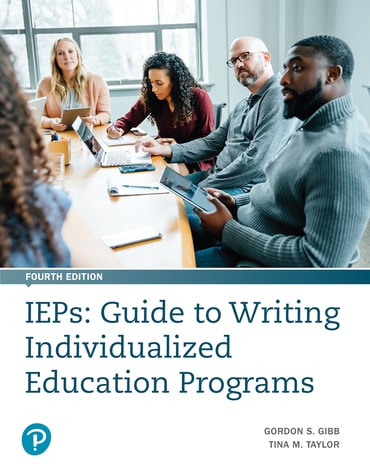Switch content of the page by the Role togglethe content would be changed according to the role

IEPs: Guide to Writing Individualized Education Programs, 4th edition
Published by Pearson (July 12, 2021) © 2022
- Gordon Gibb Brigham Young University
- Tina M. Taylor
Pearson+ subscription
per month
-month term,ISBN-13: 9780137510863
IEPs: Guide to Writing Individualized Education Programs
Published 2021
Paperback
$37.28
Price Reduced From: $46.60
ISBN-13: 9780135915783
IEPs: Guide to Writing Individualized Education Programs
Published 2020
Need help? Get in touch